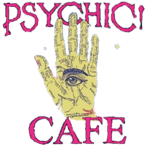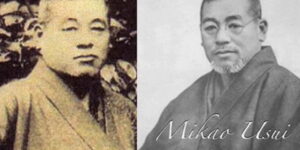Feeling anxious actually releases dopamine, motivating us to take action to pursue rewards and make changes to bring forth the futures we desire…

When you or a loved one feels anxious, how do you respond?
According to professor Tracy Dennis-Tiwary, this is the key moment when many of us make a mistake. Uncomfortable with the pangs of tension—or with seeing our kids uneasy—we hurry up and do whatever we can to make those feelings go away. We might provide reassurances about the future, pick up a smartphone, or tell ourselves there’s nothing to be worried about.
But when we do that, we miss out on the information and motivation contained within anxiety, Dennis-Tiwary explains. Anxiety is telling us that we care about the future and want it to turn out a certain way. In fact, feeling anxious actually releases dopamine, which motivates us to pursue rewards and take action to bring about the future we want. For example, we might study harder for a test, schedule a checkup at the doctor, or devote more time to our relationship.
“The emotion of anxiety is not broken; it’s how we cope with anxiety that’s broken,” writes Dennis-Tiwary in her new book “Future Tense: Why Anxiety Is Good For You (Even Though It Feels Bad).”
Dacher Keltner, the founding director of the Greater Good Science Center and the host of The Science of Happiness podcast, recently sat down with Dennis-Tiwary for an episode about the science of anxiety: why we misunderstand anxiety, how it benefits us, and how to work with it effectively
Dacher Keltner: Your book suggests that we’ve been thinking about anxiety in the wrong way. Tell us about that.
Tracy Dennis-Tiwary: A big goal of mine in this book is to ask people to step back from those assumptions we have about anxiety, that anxiety we have about anxiety, and to be curious enough for a moment to hear a different story about anxiety than the one that we’re used to hearing.
No one likes anxiety; it feels bad. And, for lots of good reasons, we might assume that anything that feels so bad is probably not good for us. We psychologists have been part of this story. If it feels bad, then let’s treat it like a disease. And what does that mean?
This disease story tells us, well, you have to prevent and eradicate and avoid it. And it tells us those bad feelings are a warning sign. They’re a malfunction, perhaps, or a failure of happiness, of mental health, so we have to fix it.
The problem with that story is that it makes us more anxious about anxiety and primes us to do more of the unhelpful things when it comes to anxiety—things like avoid anxiety and suppress it—and fewer of the helpful things.
The harder we press emotions down, the more they just zip right back and stronger than ever. Emotions are not a light switch that you turn on and off; there’s a spectrum, and we have skills when it comes to emotions. When we think of anxiety as a disease, it’s an opportunity cost in terms of turning toward this experience and learning the skills to navigate it.
DK: Why don’t we talk about the upside to anxiety?
TDT: We have convinced ourselves as mental health professionals that the medicalization of anxiety has yielded more good than bad. I think that it is out of the best of intentions that we’ve hitched our wagon to the medical model. We used medical science as a way to validate the endeavor of treating mental health as health.
But what’s happened by making it a disease is we’re using the wrong metaphor in the end. And so now we can’t tell the difference between very valid anxiety disorders, which are distinct, from the human experience of anxiety. So we’ve lost the nuance, the emotional granularity. We’ve lost the acceptance that mental health does not equal the absence of emotional suffering or discomfort, that actually mental health is the engagement with emotional suffering and working through rather than around.
DK: We throw around the word ‘anxiety’ so much in terms of clinical issues and ‘I’m feeling anxious’ and climate anxiety. How do you define it?
TDT: Anxiety is nervous apprehension about the uncertain future. And this is really important. It’s, of course, why I call the book “Future Tense.” I wanted to lean in on that definitional distinction because anxiety feels like fear. And so we assume it functions the same way—it triggers fight-or-flight.
But the thing about fear is that fear has nothing to do with the future. Fear is really the feeling that roots us in the present moment when there is certain present danger that we’re facing, like a knife at our throat. So it primes us to cope in all these very helpful ways in the moment.
Anxiety, because it has nothing to do with the present moment, it’s making us into mental time travelers into the future. We have to use one of the great achievements of human evolution, which is the ability to simulate the future, something that has not happened yet, and to hold in mind that there could be something bad coming around the bend, but there could also simultaneously be something good. Like waiting for those doctor results to come back: You might have cancer, but you might not have cancer.
In terms of information, anxiety tells us there’s this uncertainty, but it’s priming us to navigate that uncertainty, to avert disaster, to make the positive possibilities into reality. That’s what it actually primes us to do. So it can be protective, but it’s also highly productive.
DK: How do you put this into an evolutionary framework?
TDT: The third book in Charles Darwin’s evolutionary theory was “The Expression of the Emotions in Man and Animals.” The basic idea there is that when something feels bad, it’s there to grab our attention. Anxiety won’t let us ignore it, and it feels bad.
One analogy I love is the analogy of a smoke alarm. The smoke alarm goes off in your house. Now, we could just put earplugs in or go to a different room in the house, but that’s not what we do. We also don’t necessarily take it as a call to panic, but we take it as a call to investigate.
What anxiety does is it’s saying you have this uncertain future, and it’s telling you that you care about the future because you can’t ignore it and you need to investigate.
When you think about anxiety as this information that you need to pay attention to, you also realize that it means that you’re still hopeful about that future. There’s the possibility of possibilities and—because emotions are motivation, they’re energy—that energy needs somewhere to go.
Anxiety happens to be an activating emotion. It’s one that doesn’t just trigger fight-or-flight, it also increases oxytocin, the social bonding hormone. What you find is that especially with moderate levels of anxiety—not necessarily full-blown panic—you actually increase levels of oxytocin, which primes us to seek out social connection and support. So it’s almost like a fractal beauty that within anxiety it contains some of its own solutions.
DK: There’s solid research on how seeing anxiety as helpful and positive changes the physical reaction in our bodies. What is your take on that?
TDT: I love that work on anxiety and stress, and it reaffirms the power of the stories that we tell about our emotional lives, because it’s about knowledge and perspective.
I think there’s a concern that I’m saying if you just think about emotions differently, it’s going to be a cakewalk. Think differently about it, pull yourself up by your own bootstraps, and just stop whining. And that’s not what I’m saying.
Nassim Nicholas Taleb coined the term antifragility in his book a decade ago, which I think is a very useful notion to use here. Something that’s fragile is like a china teacup. You drop it and it smashes into a billion pieces, and you can never put them back together again the same way. Antifragility is the notion that there are things that actually gain from disorder or strain or challenge.
The immune system is an easy example to wrap our heads around, because if you don’t challenge the immune system with germs and bacteria and viruses, it will never learn to mount an immune response. You’d be the boy in the bubble. Muscles are that way; if you don’t work them and strain them, they atrophy.
Our emotions are the same way, too. There’s great evidence to believe that it’s only in engaging with these difficult feelings—learning the skills and coping and sometimes falling down and then knowing you can pick yourself back up again—that actually allows you to build the skills that then help you be resilient against all the curveballs that the world is going to throw your way.
DK: It is an anxious time, with COVID-19 and January 6th and white supremacy and climate change and so forth. What are a few things you can do if you’re feeling anxious about the future?
TDT: The first principle is anxiety is information. Listen to it.
The second principle is sometimes anxiety is not useful information. Let go of it and immerse yourself in the present again. Let go of that future tense.
Then the third principle is, if you let it go for the moment but you’ve circled back and you’ve decided that there’s some useful information—about the world, things you care about, the future, hope—then hitch it to a sense of purpose.
When my son was anxious about a math test, for example, I helped him see that anxiety revealed how much he cared about math, how hard he had worked that semester, and his drive to do well. The fact that he still felt anxious about it also revealed that he might have a bit more studying to do—and actually there was indeed one type of question that still confused him. He put in some extra studying, felt more confident, and did quite well on his exam the next day
DK: Where does this work, and where should we think about other approaches to anxiety? What about somebody who’s suffering profound anxiety or panic attacks?
TDT: This is a great moment to draw that distinction between anxiety and an anxiety disorder. We could have frequent and pretty strong anxiety every day and not be diagnosed with an anxiety disorder. The key difference is that the disorder is diagnosed with functional impairment, which means that the way that we’re coping with those intense feelings is disrupting our ability to live our life fully and well.
So, for example, I might have a lot of social anxiety every day, but I still get on the podcast for those fascinating conversation partners, and I still go to work even though I’m feeling anxious about my colleague maybe judging me. I find ways to work with it.
But if I’m socially anxious and I start avoiding work and refusing going on the podcast, or if I’m a kid and I don’t go to school and I can’t sleep in my own bed anymore, then it’s impairing my life. And so what you disrupt in therapy is that cycle of anxiety and avoidance.
DK: What got you to write this book? What inspired such a radically different perspective on anxiety?
TDT: I think a deep sense of failure inspired me. I’ve been a psychologist for quite a long time. I actually defended my dissertation on September 11th, 2001.
I’m a clinical psychologist by training, but also really a dyed-in-the-wool emotion scientist. And so I thought, OK, I’m going to put my head down, I’m going to do the work, and now’s the time to really beat back this crisis of mental health. Anxiety seemed to be the word that we placed to describe all of it because anxiety and uncertainty go hand in hand.
About five or six years ago, I was like, OK, now let’s check in and see how mental health is doing. I looked around and we weren’t doing any better, despite great science and great tools and science-based wellness practices and interventions. And I had to ask myself why and try to understand how I might have been part of the problem and why these potentially great solutions don’t seem to be working.
DK: What’s the one message you want our audience to walk away with?
TDT: That anxiety can be an ally. But like any ally, you need to negotiate. And that’s the messy work of being human. Even when it blocks us, anxiety can be one of the great features of being human and one of the great inner sources of strength that we have.




